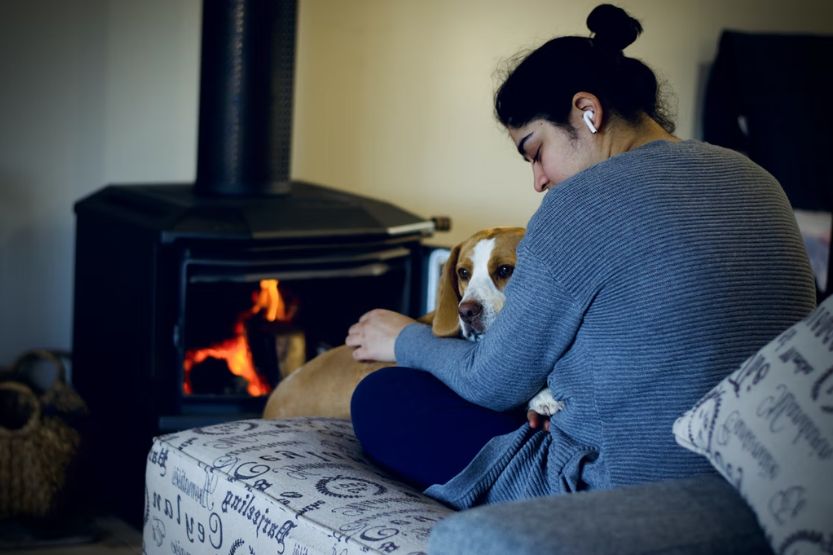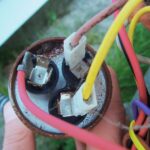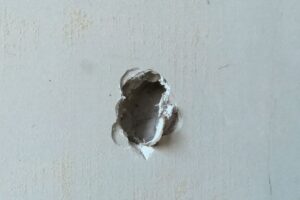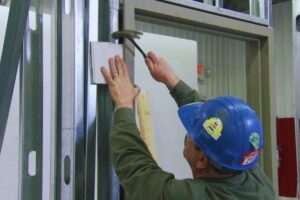There are lots of difficulties in restoring a completely rusted fireplace. You will be facing stubborn rusts on metal parts, broken parts, and old and cracked paint. In this article, I’ll discuss the rusted fireplace restoration guide – how to restore DIY.
To restore a rusted fireplace, you must first clean away any rust on the metal surfaces. After that, you have to strip the old layers of paint. And then you also have to repair cracks on the metal by welding them. After fixing all the imperfections, that’s the time you can repaint it or polish it as you want.
When restoring a dilapidated fireplace, you have to remove all the rust. Leaving just a small amount of rust will eventually cause failure in your restoration. So, you have to clean the metal surfaces by using fine or medium sandpaper. Then paint the surfaces over with a primer. That will prevent rust from forming again on the restored metal surfaces.
Read on to learn more about how to restore a rusted fireplace as a DIY project.
Rusted Fireplace Restoration Guide – How to Restore DIY

Clean and Remove All the Rusts on the Metal Surfaces
In restoring a completely rusted fireplace, you first have to clean and remove all the rusts on the metal surfaces. Then you have to strip all the old layers of paint. After that, you must repair all the cracks on the metal surfaces by welding them together again.
When all the imperfections in the metal are fixed, that’s the time that you can start polishing or painting as you desire. Before applying the first coat of paint, you must use a primer. This will prevent rust from forming again on the metal surfaces.
Use Fine or Medium-grade Sandpaper with a Wire Brush or Steel Wool
You must remove all the rust. This will ensure that there will be no spots on the metal surfaces where rust will again develop. You need to use fine or medium-grade sandpaper with a wire brush or steel wool to eliminate all the corrosion.
Use Distilled White Vinegar
You can also use distilled white vinegar to remove the rust. Pour some of it into a bowl, and dampen a cloth with it. Then scrub this cloth to the rusty areas of the fireplace.
Get steel wool, dip it in vinegar, and scrub the rusty areas. Rub these areas alternately with the cloth and the steel wool to eliminate all the rust.
Apply a Primer When All the Rusts Are Removed
You can only apply a primer or paint when all the rusts are removed. You can’t paint over rust without first clearing it, or you will waste your time and effort. Rust will come back if you don’t altogether remove it.
How Do You Restore a Rusty Fireplace?
Even if the entire room looks gorgeous, its look will be ruined by a rusted fireplace. The corroded metal surfaces of the fireplace will make the room look old and dirty. If the rusts are only in the metal edges, removing them will be easy.
However, if they are located in the inserts and ornaments, that will be a different story. They will take a lot of hard work to clean. Restoring the fireplace to its former condition may take a long time. But it is still entirely possible.
Your biggest work is knowing how to remove rust from metal fireplaces. They have formed because moisture has seeped into the metal. You can protect the metal if you do corrective measures at the first sign of rust.
But even if rust has covered the metal surfaces, you still can remove them and restore the beauty of your fireplace by undertaking a restoration process that fits your skill level and time. Preparation and using the right tools and techniques will make your fireplace look new and fresh.
Preparation
Before you can restore your rusty fireplace, there are certain things you need to prepare. This will ensure your safety and the continuity of your work. You should prepare the following materials before starting this project:
- Safety goggles
- Face mask or respirator
- Safety gloves
- Rust remover or white vinegar
- Medium grade sandpaper
- Steel wool
- Cleaning cloth
- Wire brush
- Paint stripper
- Primer and paint
Steps
1. Soak a Cleaning Cloth in the Rust Remover or Vinegar
You will start this project by soaking the cleaning cloth in the rust remover or white vinegar. Then you will rub it on the rusted spots of the fireplace.
If the rusted areas are not that deep and large, this will be enough to remove the rust, and you’ll be able to see the cast iron under the corroded parts.
2. Use a Sandpaper and Steel Wool for Tough Rusts
However, when dealing with tough rusts, you must use all the tools and materials listed above, including sandpaper and steel wool. You will first buff away the rusts using steel wool or sandpaper and occasionally wipe the buffed areas with white vinegar.
3. Use a Wire Brush to Remove Rusts in Nooks and Crannies
If the rust has penetrated the nooks and crannies of the fireplace, you may need to use a wire brush to disturb it in its place. Once you have removed all the rusts from the metal surfaces, dampen a clean cloth with water and use it to wipe away the vinegar residues.
4. Clean the Metal Surfaces with a Clean Towel or Cloth
After this, dry the metal surfaces thoroughly with a clean cloth or towel. You need to ensure no moisture is left on the metal surfaces. If you don’t do this, the rust may come back with a vengeance.
5. Apply a Primer or Top Coat to the Fireplace
After removing the rusts and drying off the metal surfaces, you must apply a primer or a top coat to the entire fireplace. You should protect the metal surfaces from rust that can attack again when moisture and humidity are high in your area.
You have several product choices that are effective in protecting metal from rust. They include rust-proof primer and paint and black grate polish.
How to Restore a Rusted Fireplace – Standard Steps

To properly undertake this project, you must follow the usual procedure that the professionals use in rusted metal fireplace restoration. The steps are not that difficult to follow. But before starting the work, consider the scale of the job first.
If your fireplace has many layers of paint buildup spanning many years, it may require extensive restoration. In addition, if there are intricate ornaments and designs on the metal surfaces, removing the paint and the rust may take some time.
Before doing anything, be sure to turn off your fireplace. Let it cool down before working on it if you’ve just used it.
So, here are the standard steps in restoring a rusted fireplace:
1. Wear Safety Gear
Put on your working clothes and wear safety gear such as safety goggles, safety gloves, and a respirator while you are doing any metal restoration work. You will be dealing with rust and paint removers which emit toxic fumes. You can get sick if you accidentally inhale them.
2. Ensure Proper Ventilation
In that sense, you should also ensure that air freely circulates where you work. In short, you must properly ventilate the room.
3. Lay Down Plastic or Paper Sheets on the Floor
Also, protect nearby areas from the chemicals and debris you will remove from the rusted fireplace. So, lay down plastic or paper sheets on the floor. These sheets will catch all the debris you will remove from the rusted fireplace.
4. Strip the Paint
In a rusted fireplace, aside from rust, there is another thing that you have to remove – paint. Whether the fireplace is painted over or paint has spilled on some of its surfaces, you also need to remove it before you can start the restoration work.
Here’s what you should do in stripping the paint away from the fireplace:
- Apply a paint stripper suitable for the metal type of your fireplace.
- Wait a few minutes for the paint stripper to do its work. After a couple of minutes, you will see some paint peeling off the metal surface.
- Peel away the paint, and scrape the stubborn paint that didn’t peel away. Continue peeling and scraping until you have removed all the paint.
- Use the steel wool or sandpaper to get into the details and corners of the fireplace. Be careful with the metal so it won’t be damaged.
- Get a damp cloth and use it to wipe the metal surface. Dry it thoroughly.
- If your fireplace is cast iron, apply iron paste or grate polish to finish your work.
- You can apply a top coat or several coats of paint if you wish.
Again, how to restore a rusty fireplace? To restore a rusty fireplace, you must remove the rust from the metal. Remove the old paint, repair cracks, then repaint or polish the fireplace.
What Kind of Paint and Primer Should You Use on a Metal Fireplace?
If you want a new look for your fireplace, you may want to repaint it. Now that your fireplace is down to its bare metal, you can paint it with your desired color to look brand new.
First, you need to apply a primer to the bare metal. The recommendation is to use an oil-based primer because a primer will seal the metal from the elements that cause corrosion. Also, it will provide a surface where the paint can bond to ensure it will last.
The recommendation is to use oil-based paints in painting metal surfaces because they effectively block moisture from the painted surface. Use paints that are specifically made for metal surfaces.
If you can find oil-based paint in a spray can, it will make your paintwork easier. Oil-based paints are not easy to apply. They also take a long time to dry. So, if you can buy them in spray cans, it will make your work a lot easier.
How to Deal with Crack on the Metal Surface
If your fireplace has seen many years, it probably has cracks here and there. Cracks are usually common in fireplaces that are made of cast iron. To repair these cracks, you need to weld them.
This is a job for a professional welder. Cast iron does not respond well to sudden increases in temperature. It must be carefully and gradually heated before you can weld the crack together.
Allow the weld to cool down gradually before you continue working with it. If you are not well-versed and experienced in this work, you better leave it to a professional welder.
How to Paint a Restored Metal Fireplace

After restoring your fireplace to its former self, you have a choice of polishing or repainting its surface. You can use grate polish if you want it to have a polished finish.
You can apply the grate polish to the metal surface using a rag. Or, if you want your fireplace to acquire a burnished look, spray WD 40 on its surface.
Another viable option is to paint your fireplace the color that you want. Painting it over with a new color will make your fireplace look brand new.
If you live in a highly humid area, you need to give it a coat of primer before coating it with the color you want. This will prevent rust from attacking the metal surface.
Here are the steps:
1. Scrub the Metal Surface with a Degreaser
The first step is to scrub the metal surface with a degreaser. Use a coarse brush to scrub the surface. After scrubbing, rinse the metal with clean rags dipped in water. Then allow the metal surface to dry.
2. Cover Sections That Do Not Need Painting
Get some painter’s or masking tape and stick them to the sections of the fireplace that you don’t want to be painted. These areas should be covered so that they will remain unpainted when you apply or spray the primer and top coat.
3. Apply the Primer
Apply a light coat of primer on the bare metal surface with a 3 to 4 inches latex paintbrush. You can use a galvanized metal-etching primer for this purpose. A light coat is the best at this stage.
Do not apply more than required because brushstrokes and runs will be visible in the final paint finish. After the application, let the primer dry completely. This may take around four hours.
4. Apply the Paint
Once the primer has fully dried, you can now apply the paint. You can still use the brush you used in applying the primer, provided that you have completely cleaned out all the primer.
If you want, you can apply two top coats of paint. With a double coat of paint on the metal, it will be tough for rust to develop on the metal surface. You can use epoxy appliance paint for this step.
Apply the two top coats of paint the same way you have applied the primer. After applying the first top coat, allow two hours before applying the second top coat.
If your fireplace is heavily rusted and there’s too much work that you can’t do, perhaps it would be better for you to let a professional metal restorer do the restorative work.
They would have the necessary tools, such as a sandblaster that can remove all the rusts no matter where they are located in your fireplace.
Frequently Asked Questions
If you still have some questions about restoring a rusted fireplace, perhaps you will find your answers below:
How Can I Restore a Rusted Fireplace?
You can start restoring your rusted fireplace by first cleaning and removing all the rust that you can find on its surface. If it is painted over, you will also need a paint stripper. You can buy a rust remover or use white vinegar to remove rust.
You also need to sand the metal surface to remove stubborn rust and to prepare the surface just in case you want it painted. Covering it with finishing paint, you should first apply a primer to the metal surface.
The primer will prevent rust from attacking the metal surface and provide a bonding surface for the paint to hold on to.
How Can I Paint a Rusty Fireplace?
To paint a rusted fireplace, you should remove the rust on the metal surface. If you paint over it, the rust will continue eating away the metal surface it has attached itself to. So, to protect the rest of the metal, you should remove all the rust first.
After removing the rust, apply a paint primer before applying the first coat of finishing paint. The metal surface will also have additional protection from rust if you put another coat of paint on the first coat.
In Closing: DIY Guide: How to Restore Rusted Fireplace
If you want to restore a rusted fireplace, you must remove any rust and clean the metal surfaces. And then you have to strip the old layers of paint.
After that, you need to repair the cracks on the metal by welding them. When you have repaired all the surface imperfections, you can now start repainting or polishing the fireplace as you want.
You can restore an old and rusted fireplace if you’re a DIYer. Be aware that it takes much preparation and effort. While that may be so, restoring a dilapidated fireplace is very rewarding, especially if you can bring it back to its former glorious self.

![Wiring Outlets in Series [How-to Guide] wiring outlets in series](https://homecarezen.com/wp-content/uploads/2022/08/wiring-outlets-in-series-150x150.jpg)


![Read more about the article Hot Water Heater Is Only Lukewarm [Causes and How to Fix]](https://homecarezen.com/wp-content/uploads/2021/04/hot-water-heater-only-lukewarm-300x200.jpg)
